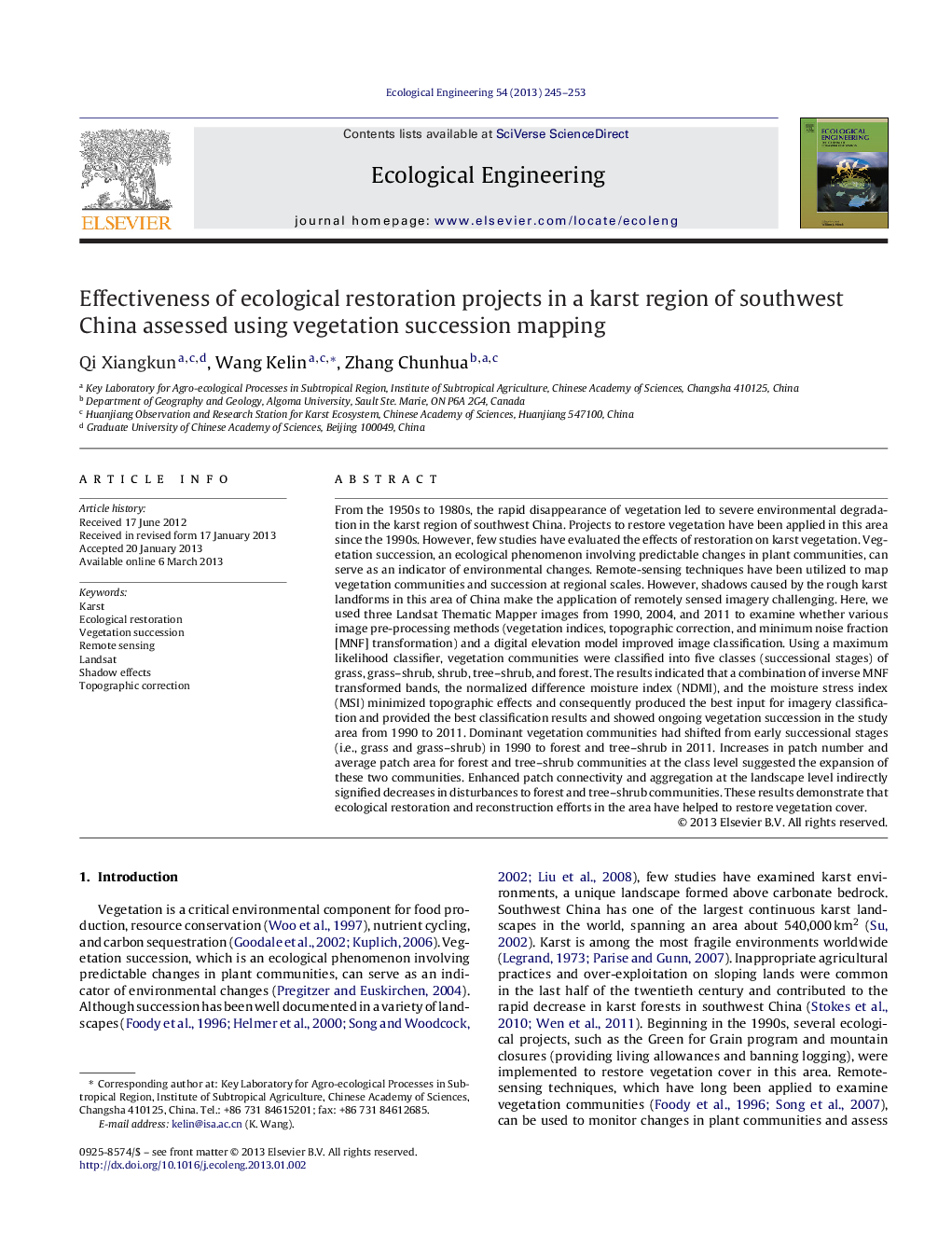| Article ID | Journal | Published Year | Pages | File Type |
|---|---|---|---|---|
| 4389815 | Ecological Engineering | 2013 | 9 Pages |
Abstract
From the 1950s to 1980s, the rapid disappearance of vegetation led to severe environmental degradation in the karst region of southwest China. Projects to restore vegetation have been applied in this area since the 1990s. However, few studies have evaluated the effects of restoration on karst vegetation. Vegetation succession, an ecological phenomenon involving predictable changes in plant communities, can serve as an indicator of environmental changes. Remote-sensing techniques have been utilized to map vegetation communities and succession at regional scales. However, shadows caused by the rough karst landforms in this area of China make the application of remotely sensed imagery challenging. Here, we used three Landsat Thematic Mapper images from 1990, 2004, and 2011 to examine whether various image pre-processing methods (vegetation indices, topographic correction, and minimum noise fraction [MNF] transformation) and a digital elevation model improved image classification. Using a maximum likelihood classifier, vegetation communities were classified into five classes (successional stages) of grass, grass-shrub, shrub, tree-shrub, and forest. The results indicated that a combination of inverse MNF transformed bands, the normalized difference moisture index (NDMI), and the moisture stress index (MSI) minimized topographic effects and consequently produced the best input for imagery classification and provided the best classification results and showed ongoing vegetation succession in the study area from 1990 to 2011. Dominant vegetation communities had shifted from early successional stages (i.e., grass and grass-shrub) in 1990 to forest and tree-shrub in 2011. Increases in patch number and average patch area for forest and tree-shrub communities at the class level suggested the expansion of these two communities. Enhanced patch connectivity and aggregation at the landscape level indirectly signified decreases in disturbances to forest and tree-shrub communities. These results demonstrate that ecological restoration and reconstruction efforts in the area have helped to restore vegetation cover.
Keywords
Related Topics
Life Sciences
Agricultural and Biological Sciences
Ecology, Evolution, Behavior and Systematics
Authors
Qi Xiangkun, Wang Kelin, Zhang Chunhua,
